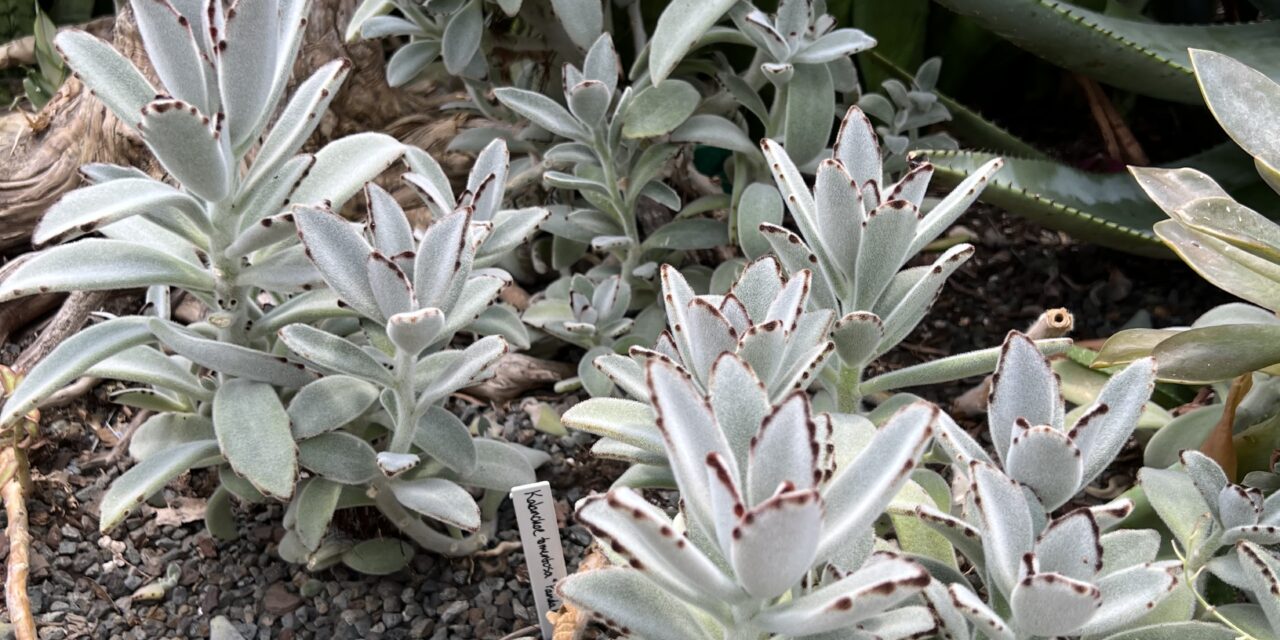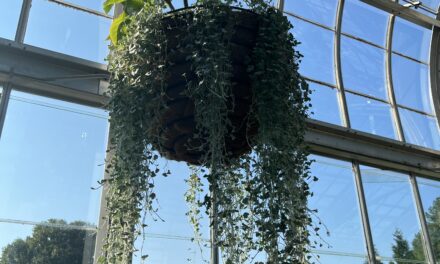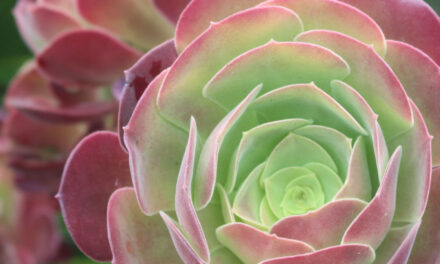These fuzzy succulents make for beautiful houseplants. I think you’ll be surprised how easy they are to care for.
Succulents as a group evolved in some very inhospitable places.
Their environment is usually hot and dry and has animals just dying to eat them. That means that succulents have had to develop a lot of strategies to help protect themselves from hungry animals. In some cases, they might even have to protect themselves from the sun. The fuzzy hairs on some succulent leaves are a way to do both.
You’ve most likely seen lots of succulent plants that have ‘bloom’ – no not the flowers, a layer of wax that protects them from the sun. That waxy coating is another example of the different adaptations that help succulents survive their environments.
This is typical of Echeveria, Graptopetalum, and many of the hybrids between those two genera. Sedum plants show bloom as well, and if you rub off the coating you can see a real difference between the bloom and the actual surface of the leaf.
The evolution of a fuzzy surface is another adaptation to extremely intense light. Each hair will cast a bit of shade on the leaf surface, making it a tiny bit cooler for the leaf. The hairs also help to disperse the light and make it less intense, while also dispersing the heat from the light.
Caring for Fuzzy Succulents
Fuzzy succulents do have some specific care requirements when you bring them inside, such as not being watered onto the leaves, especially with cold water or water that has a lot of minerals.
Cold water droplets harm the leaf by creating magnifying effect when in full sun. The tiny hairs that make up the fuzz can be damaged by the magnification, leaving the plant exposed to direct sunlight where it can be burned. Even with the fuzz intact, burns are more likely when there are water droplets trapping the sun.
Another important step is to use low-mineral water. If you have low-mineral water from your tap that’s fine, but most people should use filtered water. If your home water filter doesn’t do enough, you might need to get distilled water from the store. Alternatively, water from the condensation tank of an air conditioner is a good option.
Rainwater can work for succulents, but beware that pollution and other contaminants can get into the water as it falls. Over time that contamination can cause problems since the contaminants build up in plant pots a lot more easily than they do in natural soil.
This next photo shows one of the most common kinds of damage to a fuzzy succulent, overwatering:
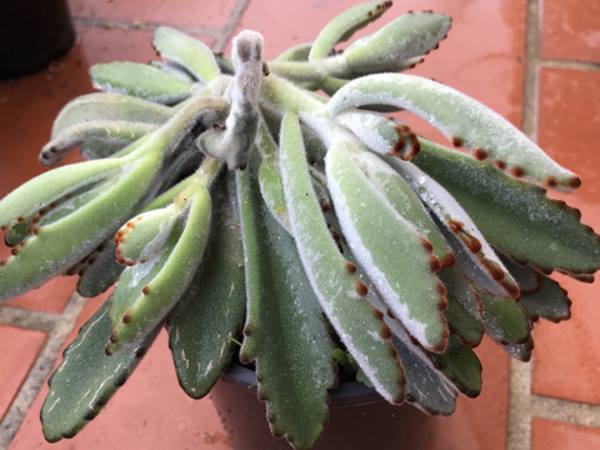
Overwatering can damage any succulent, but fuzzy succulents are particularly prone to drooping or getting various mold and rot diseases when they aren’t allowed to dry out between watering.
Identifying Common Fuzzy Succulents:
Here are some examples of common fuzzy succulents and how to identify them.
1. The Bear Paws Plant
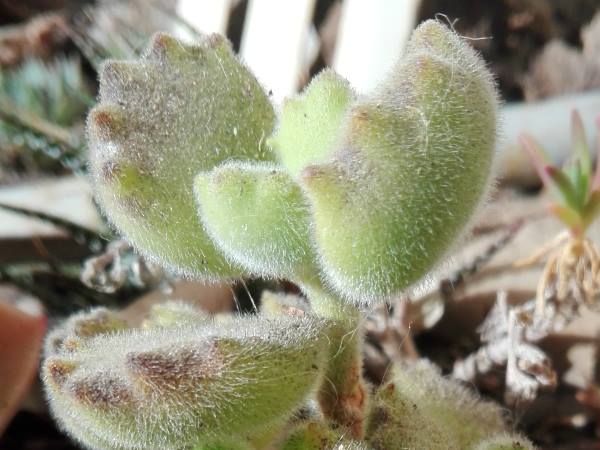
Cotyledon tomentosa – the Bear Paws Plant
The fat leaves and longer stem on this succulent are two of the more identifying features of the Bear Paws plant. Like most succulents, they grow in a loose circle, and they can grow a orange-pink flower at the top of each leaf cluser.
Red to brownish tips on the leaves are a normal coloration, rather than a sign of a problem in this case.
2. “David” (Crassula Lanuginosus)
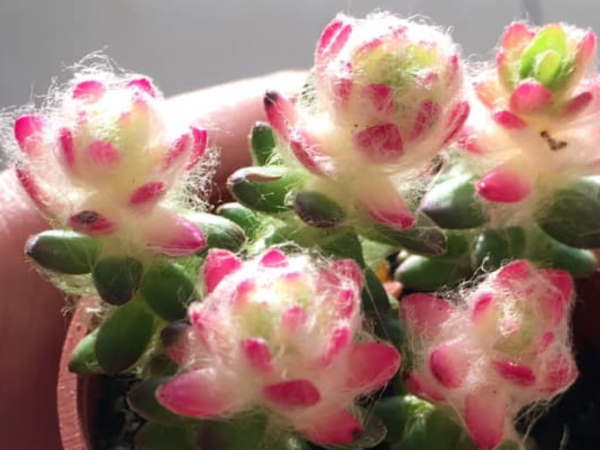
Tentatively, Crassula lanuginosus ‘David’
The combination of classic succulent green and pale white leading to bright pink is one of the most iconic characteristics of this plant. Yes, David is the current proposed common-use name.
This specimen shows heavy fuzziness, which could actually be a combination of the leave’s natural fibers and the web of spider mite parasites that often infest succulents.
The central branching stems of this succulent are also pink to red-orange depending on climate and the plant’s maturity.
3. Hedgehog Iceplant
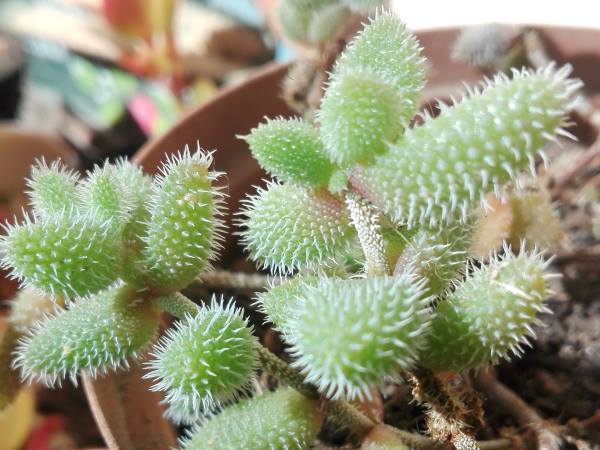
Delosperma echinatum – Hedgehog Iceplant
Hedgehog ice plants might look spikey and sharp, but they aren’t actually too spiney to touch. Their bright green color looks lighter than it is thanks to the fuzzy coating, and these plants like to spread out in all directions.
The hedgehog ice plant is also known for blooming. Some blooms are all yellow, while others have a yellow core and white petals.
The tips of the leaves can be reddish in color while they are growing.
4. Echeveria Ciliosum
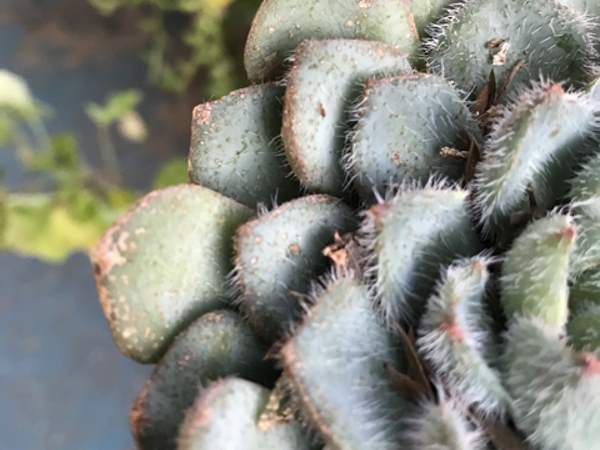
Echeveria ciliosum
Echeveria Ciliosum is another color-shifting plant, with green inner leaves and core, and reddish tips leading out to brown to reddish outer leaves where it’s growing.
The color shift is usually less pronounced with this succulent variety compared to it’s cousin the sempervivum ciliosum.
Easy propagation make this succulent a popular variety with houseplant lovers since it’s easy to get more plants whenever you want them!
5. Plush Plant
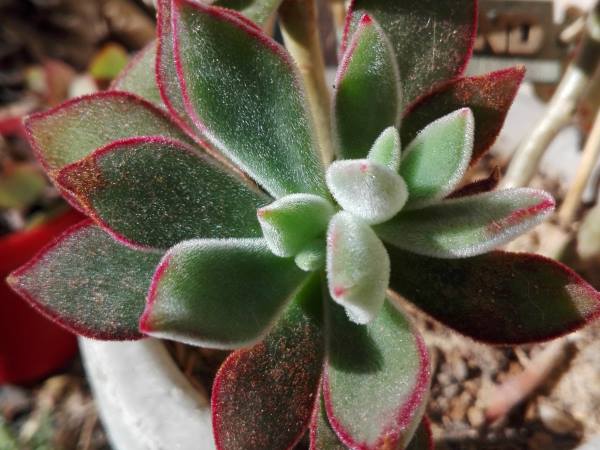
Echeveria harmsii – plush plant
Plush plants are known for looking almost pillowy soft, though those red-rimmed tear shaped leaves are firmer than you’d think.
This variety of succulent often has velvet-appearing fuzziness, which is part of what makes them look so soft. Rather than having red near the growth points (which means that the leaf isn’t fully saturated with chlorophyll yet), this plant tends to be paler where it’s growing.
Some new leaves may even appear almost white!
6. Red Velvet Plush Plant
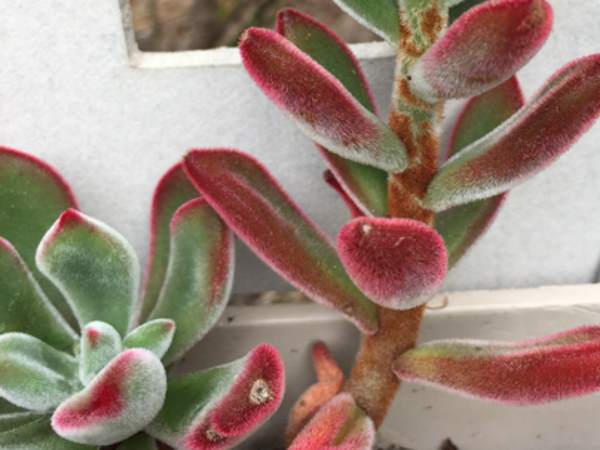
Echeveria pulvinatum – Red Velvet Plush Plant
The red velvet plush plant is similar in most respects to the standard plush plant, with the same full tear shaped leaves.
There’s one big difference between the two – the color of the growing leaves. The red velvet plush plant tends to have a brighter orange stem and a lot more red, scarlet, and pink hues in the leaves. In this case, a red tip is a sign of a growing leaf, while more mature leaves often turn slightly reddish over time.
You can encourage the red color by exposing this plant to more sunlight since it needs less chlorophyll to produce enough food.
7. Echeveria Setosa Hybrid
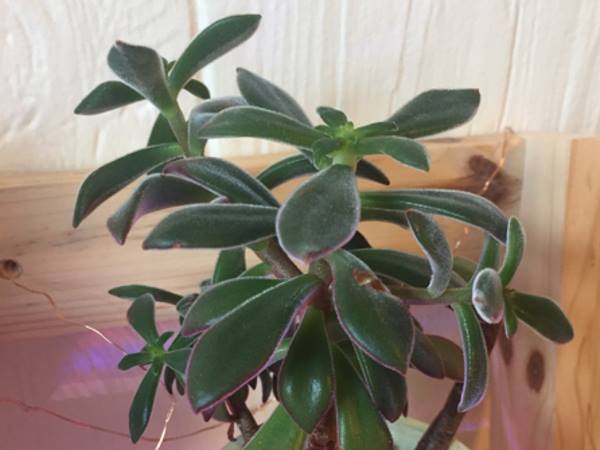
Echeveria setosa hybrid
Echeveria setosa hybrids almost look like a succulent bred with a palm tree. They have a pale stem near the growth tip, but the stem gets darker as it gets closer to the soil.
The larger tear-shaped leaves are some of the darkest emerald green you can expect in succulents, and mature leaves may almost start to look waxy instead of fuzzy. That’s just a trick of the light though, you’ll still feel spines on those lower waxy-looking leaves!
8. Echeveria Pulvoliver
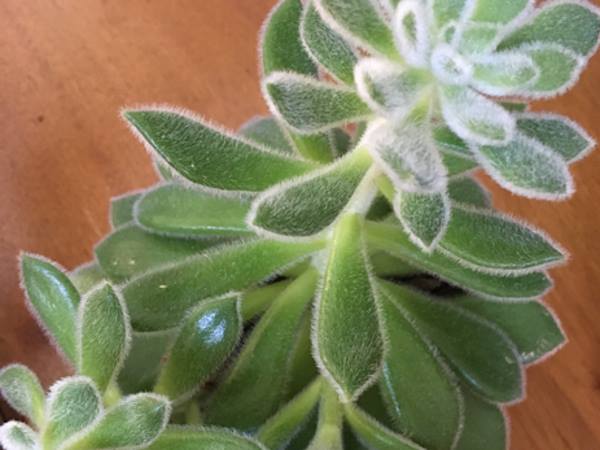
Echeveria pulv-oliver – a cross between two velvety Echeveria
This fuzzy succulent is another Echeveria, with a slightly more angled version of the classic tear leaf shape. However, its brighter green and longer spines are the result of intentional cross-breeding between two other species of Echeveria!
9. Chocolate Soldier
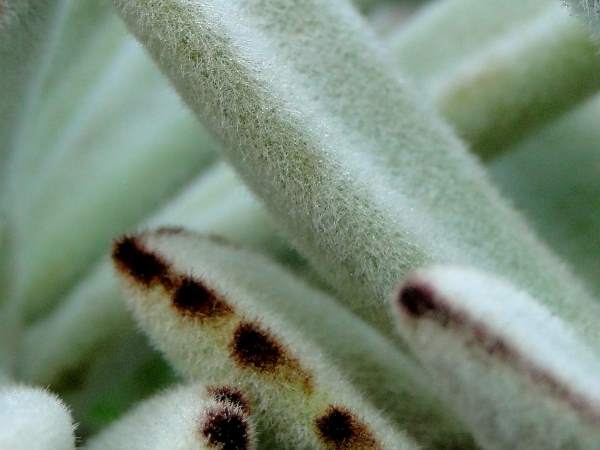
Kalanchoe tomentosa – Chocolate Soldier
Chocolate Soldier plants are named for the combination of their very upright stems (when healthy. Succulents that are straining for sun or have been overwatered may bend over, and the stem may even snap), pale sage-colored leaves, short dense fuzz, and the milk-chocolate brown spots that ring the top half of every leaf.
Some varieties have pointed triangular leaves, but more common varieties have a wide rounded tip to their leaves.
Well, there you have it! More information about the care and keeping of fuzzy succulents, along with a quick guide to identifying 9 species of succulent!
And check out more fuzzy succulent photos below.
Fuzzy Succulent Photos
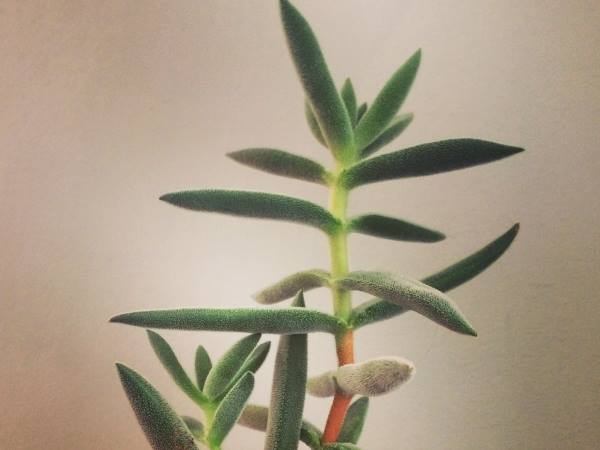
Portulaca or Delosperma with fuzzy leaves

Tradescantia sillamontana

